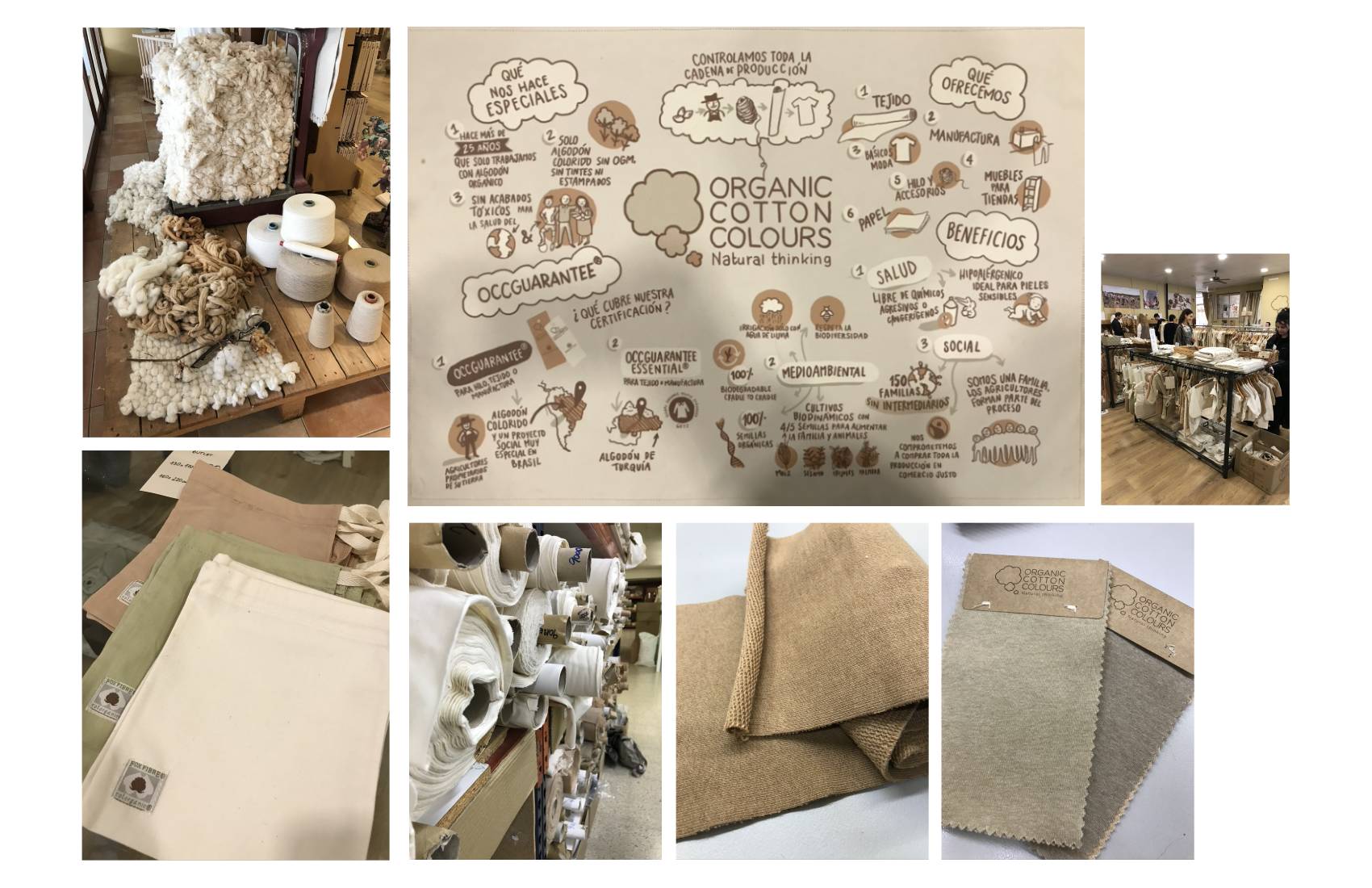4. BioChromes¶
A collaborative works by Ruby Lennox, Maria-Rigina Chatzivalasi, Julija Karas, Hala Amer, ChungHan Lu, and Barbara Rakovská, with mentorship from Petra and Julia.
Explorations¶
Biochromes are colors chemically formed microscopic, natural pigments. They are a coloring matter that can be extracted from a plant or animal. Biochromes are locally positive, biobased, and produce zero waste. Natural dyes only work on natural fibers. Types of bio-based fibers include vegetal, ceullulose fibers, (cotton and linen), animal, protein fibers, (silk and wool), man made (viscose), and chemically recycled. With treatment and mordanting, they can be used with biochromes. Some sources include: insects, seeds, fruits, leaves, flowers, bark, roots, berries, mushrooms, clay, soils, and bacteria. From biochromes you can form inks, dyes, and pigments.

Throughout this week we are working with silk, viscose, cotton, and linen.

Tools Needed
- Pots
- Measuring cups
- Spoons
- Scale
- Bowls
- Containers
Sources Used
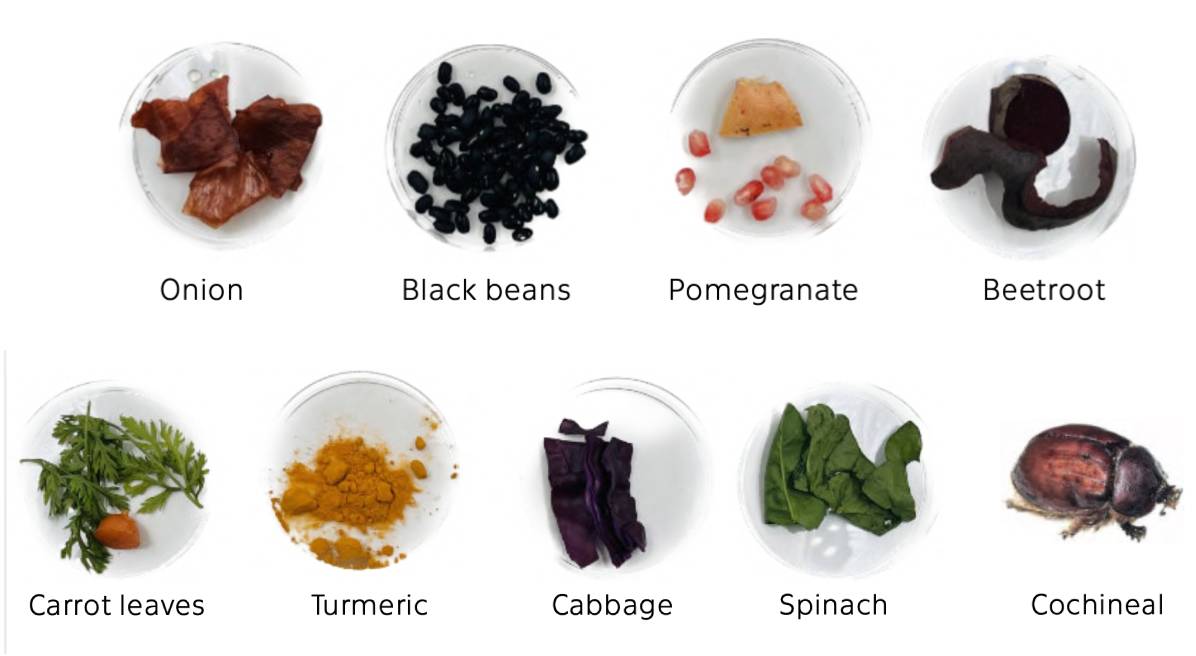
- Purple Cabbage
- Avocado pits
- Turmeric
- Onion peels
- Spinach
- Carrot greens
- Beetroot
- Indigo
- Pomegranate
- Black Beans
- Cochineal
Dyes¶
Dyes are colored substanced that chemically bond to the subtrate to which they are applied. Below are the steps to scour, mordant, and dye the fabrics.

Step 1: Weighing¶
Weigh each type of fabric on its own and note them down. We first cut the fabrics into squares of 15 x 15 cm and then weighed them.
The weights we recorded are:
- Silk: 46.4 g
- Viscose: 115.9 g
- Cotton: 265.5 g
- Linen: 327.2 g
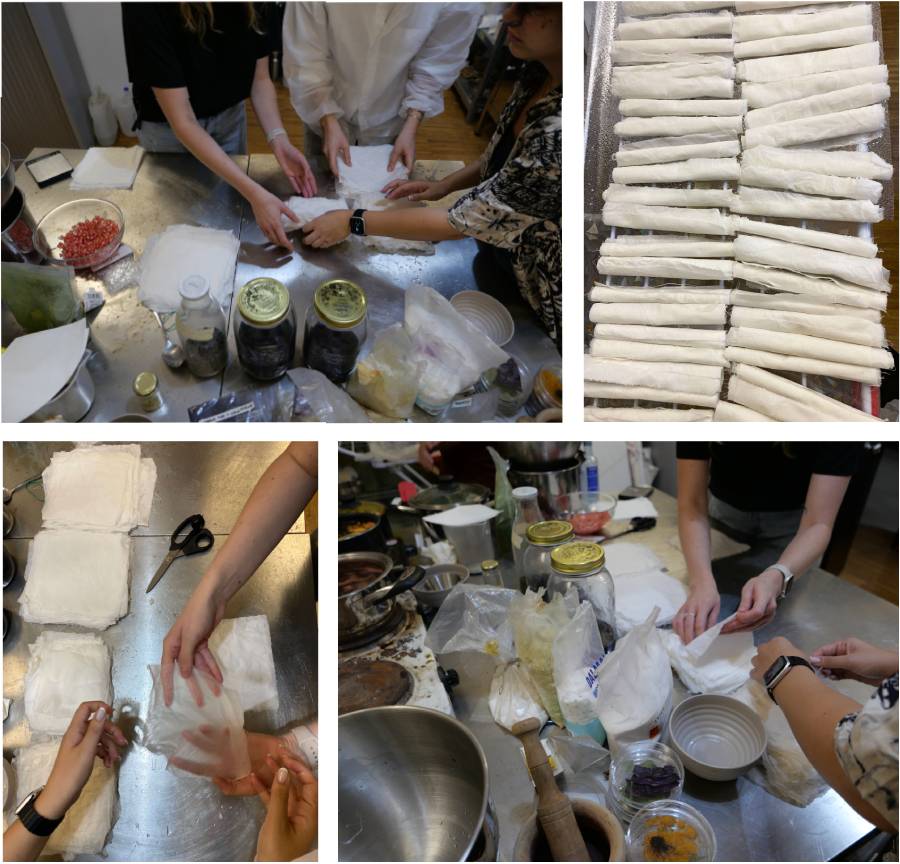
Step 2: Scouring¶
As scouring is only done to the plant fibers, we calculated the viscose, cotton, and linen and added 2% of the sum of their weights of soda carbonate in a pot of water.
- Total weights = 708.6 g
- 2% of 708.6 = 14.172 g
We placed the fabrics into the water+soda carboante mix and let it simmer for an hour. After scouring them, we rinsed them and clustered one of each material and rolled them as 'burritos' to aid with the mordanting and dyeing processes to come.
Step 3: Mordanting¶
As a group, we decided to mordant the fabrics and not the dye baths so we split the 'burritos' into two piles. We mordanted one pile with Alum and the other with Iron. To calculate the mordants needed we recalculated the total weights (with the silk) and then divided it into two.
Amounts
- Iron: 1% of WOF
- Alum: 15% of WOF
Calculations
- Total WOF = 825 g
- Each pile = 412.5 g
- Iron = 1% of 412.5 = 4.125 g
- Alum = 15% of 412.5 = 62 g
We added the 'burritos' into the preheated mordanted pots and let them simmer for a while.
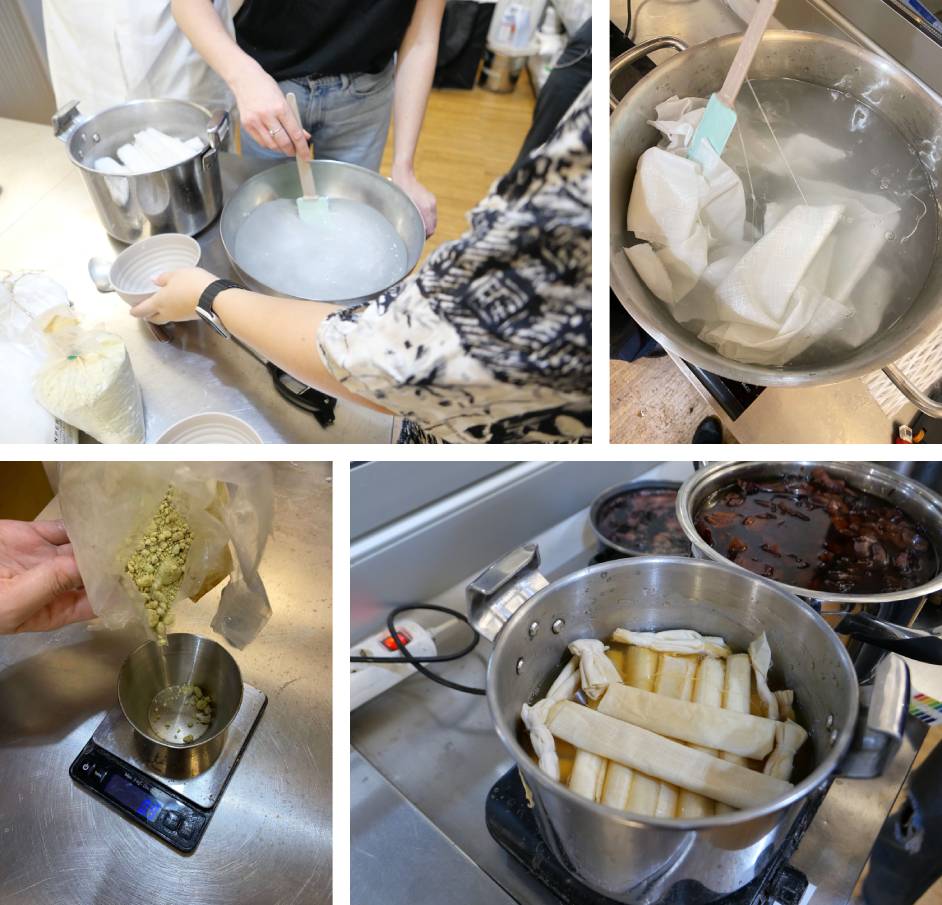
Step 4: Dye Baths¶
While the fabrics were being prepped we began with prepping the sources for the dye baths.
Hot Bath
- Onion Peels (stable)
- Avocado Pits (somewhat stable)
- Carrot Greens (fugitive)
- Spinach
- Pomegranate Skin
- Beetroot (fugitive)
- Cochineal (stable)
- Purple Cabbage (fugitive)
- Turmeric (fugitive)
- Indigo (stable)
For the hot baths, we chopped the sources and placed them in pots on medium heat and let them simmer for a few hours. Make sure not to let it boil.

Cold Bath
- Black Beans (fugitive)
For the cold bath, pour the beans in lukewarm water and let them sit overnight.
Once the dye baths have simmered for a few hours, we strained them and separated each dye into two dye baths. (One for the iron mordanted fabrics and the other for the alum mordanted fabrics)
While waiting for the dye baths to finish simmering, we tested some of them in petri dishes with different modifiers. The modifiers are alum, baking soda, vinegar, and iron.


Once the fabrics and dye baths were ready, we began dyeing the fabrics. We let them sit in the dye bath for 15 minutes and 30 minutes to test if there are any differences in the colors. Once we took them out of the dye bath, we rinsed them and placed them on a drying rack with their labels to dry.
Pigments¶
Pigments are substances or powders that can be produced from the leftover dye mixed with a metal & alkali. They can be used as is or can be mixed with acid, water, and heat to become liquid dye once again.
- For every 400-500 g of dye bath, we added 6 g of baking soda mixed in 100 g of hot water and 18 g of alum mixed in 100 g of hot water.
Alum is used to create the chemical reaction to solidify the color and the bakind soda is used to netralize the pH. Once these are mixed together with the dye bath, they will create a chemical reaction that causes the liquid to solidify. The solidfied parts are the pigment and they will sink to the bottom. Once they have fully sunk, they can be filtered and dehydrated to turn into powder.
How to Make Pigments¶

Once you measure out 400-500 g of the dye bath, place it in a a cylindrical container inside a bowl to contain any spill. Then heat water and separately mix the 6 g of baking soda with 100 g of hot water and the 18 g of alum with 100 g of hot water. Make sure to continuously stir the alum or it will begin to crystallize.
Firstly, pour the alum into the dye bath and continue to stir. Then slowly, pour in the baking soda. If poured too quickly, the foam will pop out of the container!
We experimented with many different mixtures from the cabbage, black beans, avocado, and onion.

Inks¶
Inks are dense liquids that contain soluble biochromes and disperse pigments in a medium. They can be made to be absorbed by the material or stay on the material. To make inks you need a vehicle, binder, and additive. A vehicle is the liquid in which the pigment is suspended. Binder is the substance that acts as a glue between the dye substance and vehicle. The additive helps stabilise, preserve, and stabilise the ink.
We used water as a vehicle, arabic and guar gums as binders, and to preserve the ink we would need to use thyme oil.
How to Make Inks¶
For the inks, we used Arabic Gum and Guar Gum for different consistencies and purposes. The Arabic gum is more liquid and is better for painting or inking while the Guar gum is thicker and denser and can be used for block printing or screen printing.
To make the inks we measured out 150 ml of the dye bath and placed in a glass container separately. Then we measured 50 ml of water and mixed in the gum slowly while mixing thoroughly. We started with 3.5 g and increased depending on the desired consistency.
We experimented with black beans, beetroot, and cabbage.



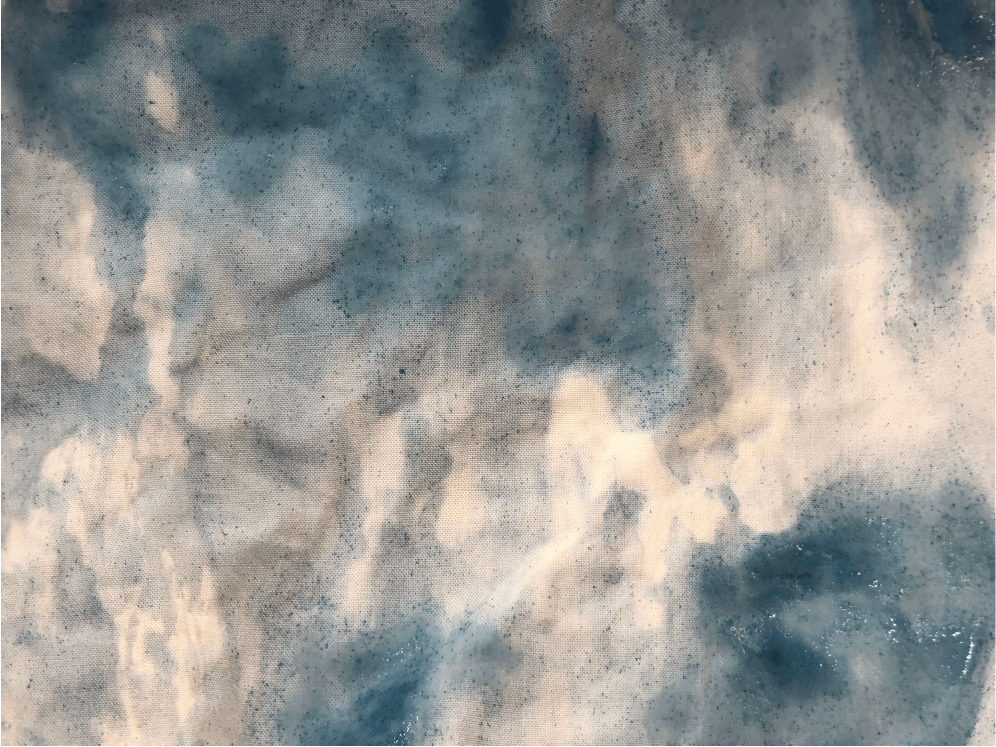
Digital BioPantone¶
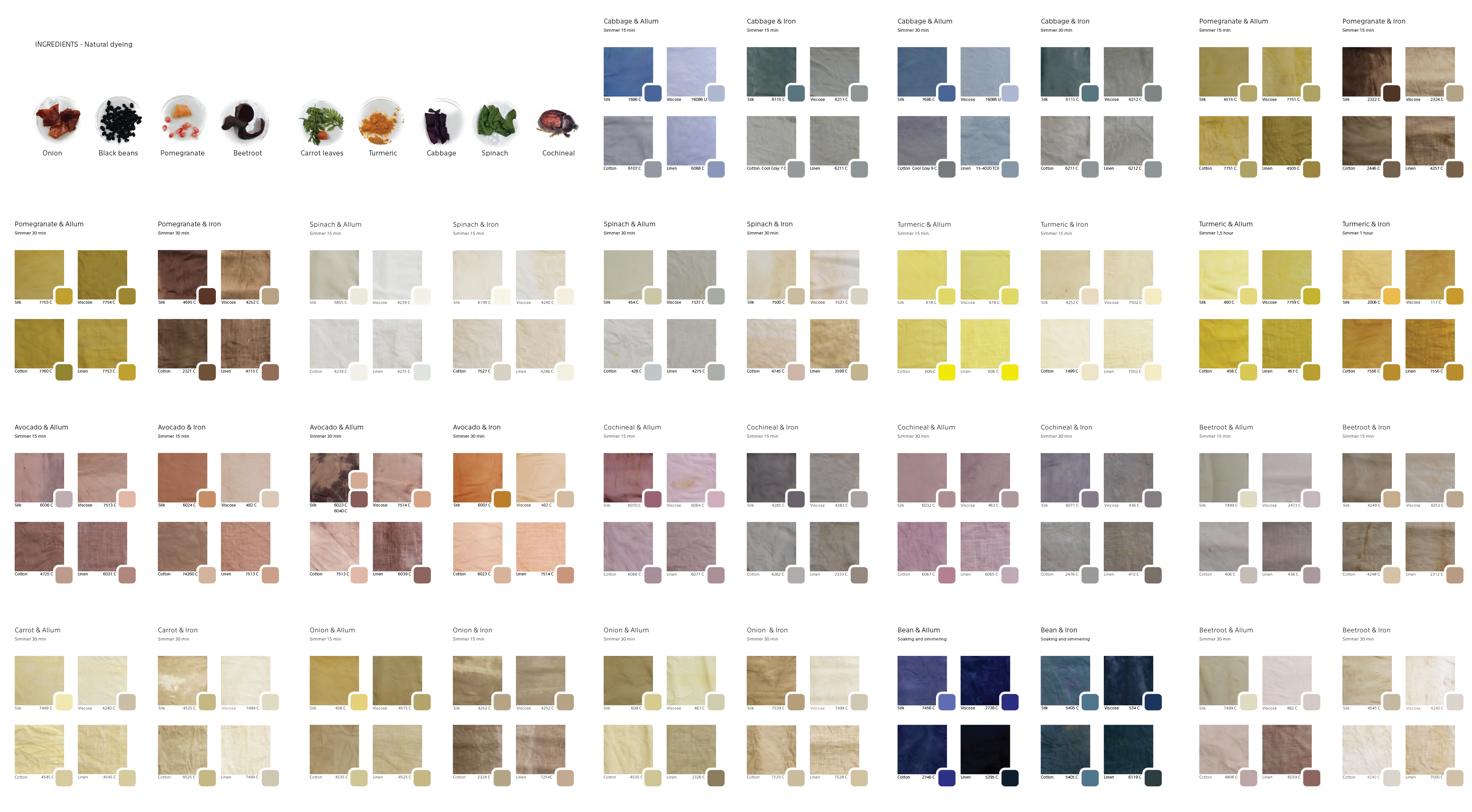 Download FabLab BCN 23/24 Digital BioPantone
Download FabLab BCN 23/24 Digital BioPantone
Physical BioPantone¶
We wanted a physical biopantone that is clear, tactile, and can be portable as well. We were inspired by the microscope slides and press fit lasercutting design.

First Iteration¶

Final Renderings¶

Final BioPantone Presentation¶

Organic Cotton Colours Visit¶
During this week we went on a visit to Organic Cotton Colours, nearby Barcelona. They offer organic cotton in a range of 3 different naturally occuring colours; ecru, brown and green. These colours come from the different seeds they use for the cotton not from any post processing.
We viewed their shop, in which they had a selection of clothes they had produced over the years using their cotton and had a talk from Santi Mallorqui Gou, the CEO, about their business model and production methods. As well as being organinc, they use regenerative practices to grow their cotton, working with independant farmers in Brazil and ensuring it is grown as part of a polyculture to help maintain the fertility of the soil.
They sell the cotton to designers and makers in a range of states from yarn to lengths of textile to finished garments. Find out more here
